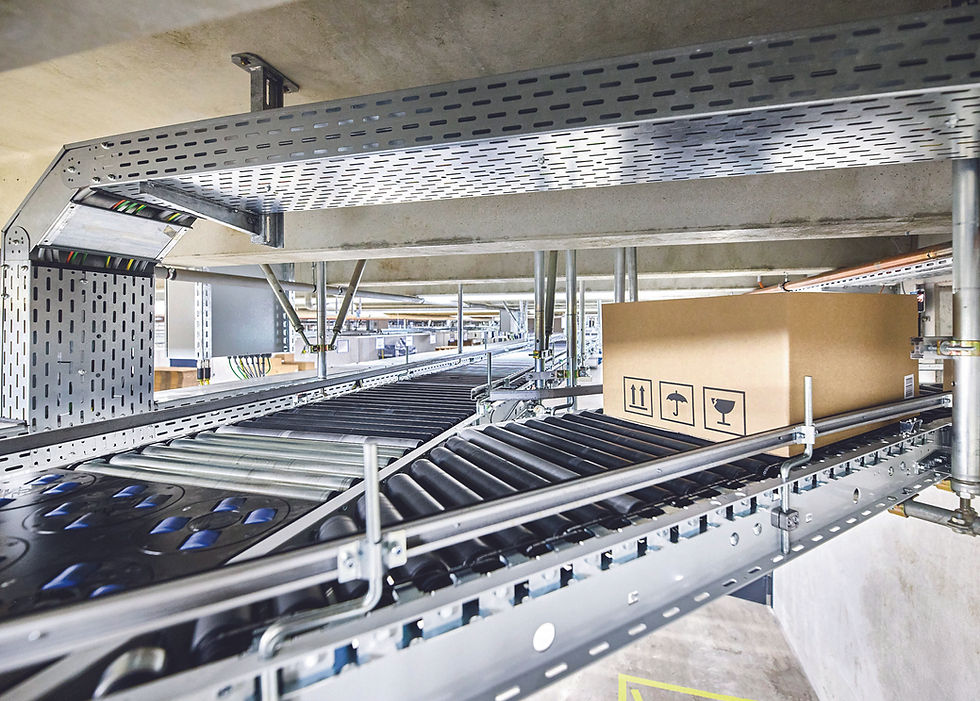Uninterruptible Power Supplies Prepare Machines for Unknowns
- Eric Reiner

- Apr 1, 2021
- 4 min read
Updated: Jul 19, 2023
While UPS technologies are no longer optional in machine designs, engineers should still have options to select the best device for brownfield or greenfield applications

If there were no unknowns to figure out in the design, commissioning and operation of machines, then there would be little use for automation and controls engineers. The goal, as professionals in the industrial world, is always to build the most dependable system, but environmental conditions often create unique situations that take time to resolve. However, unplanned downtime due to improper controller shutdown should not be one. Today’s uninterruptible power supply (UPS) technologies, which perform proper shutdowns and allow controllers to save projects and recipes when power failures or other issues occur, allow machine builders to plan for the unknown.
In the past, many viewed industrial UPS technologies as luxuries reserved for the most critical applications. But today, that view has changed somewhat, as the number of machines that need this capability has grown. Most contemporary machines collect and transmit data to measure performance, send alerts and complete track and trace, whether in the pharmaceuticals, food processing, packaging or intralogistics industries. In an e-commerce application, for example, abrupt shutdown could cause a conveying, sortation or automatic storage and retrieval (ASRS) system to lose track of packages and products, leading to incorrect shipments and costly returns. It could also lead to corrupted files and programs on the machine controller, which would delay restart once power is restored.
Machine builder OEMs know their facilities and the reliability of their electric utilities well, but the actual machines are typically shipped around the country or the world where the reliability is unknown. Some areas regularly experience blackouts or rolling brownouts, and even if end user facilities have backup generators, the lag between line voltage disappearing and the generator starting could be just enough for disaster. With advances in capabilities, form factor and competitive costs, implementing UPS technologies for Industrial PCs (IPCs), Panel PCs and other controllers is no longer optional. But there should still be flexible options to fit any machine requirements.
UPS capacities and connections deliver flexibility

Depending on the application, controller and other factors, many UPS options are currently available. Some PC-based controllers directly integrate a capacitive UPS for lower-end requirements. In the Beckhoff CU81xx UPS series, options for 24 V DC external capacitive and NiMH battery-backed devices exist as well. These can include, for example, a 0.9 Wh capacitive UPS with a 120 W maximum power output, a 15 Wh battery-backed UPS with a 120 W maximum power output or even a 30 Wh battery-backed UPS with a 240 W maximum power output. Scalable options can provide power for seconds up to many minutes depending on application complexity and time required for controlled shutdown procedures.
Power delivery options should also offer flexibility. Some UPS devices connect to machine controllers via one-cable technology (OCT), USB 2.0 ports or I/O terminals. OCT is optimal for PC-based controllers and touchscreens. OCT combines the power supply and UPS communication in a single cable, which benefits commissioning and maintenance. The USB 2.0 connection is designed for all IPCs with an appropriate interface and a complete operating system. An I/O connection can enable use of these UPS devices with traditional PLCs and other devices; regardless of vendor they can read power failure signals and respond immediately. By offering maximum flexibility, the UPS also makes future controller upgrades easier if a new platform or additional features become necessary.
Form factor proves powerful
For the maximum benefit, UPS technologies should offer compact, easy-to-integrate form factors. Simple installation via DIN rail or a mounting bracket enables integration of devices into new electrical cabinets in greenfield applications or flexible retrofits in existing brownfield applications. With compact sizes of 100 mm x 100 mm x 90 mm or less available from Beckhoff, the capacitive or battery versions meet tight footprint requirements.
For NiMH battery-backed versions, the battery cover should be easily accessible, as in the CU81xx series. All batteries eventually need replacement, and while UPS batteries are designed to last and provide maximum reliability, they are no exception. Selecting a device with a removable front cover will increase uptime, especially if it features only two screws, for instance. Through this optimal design, the entire UPS will not need to be removed or taken apart for necessary maintenance, and machine availability can remain as high as possible.
By selecting the correct UPS options for each unique application, machine builders and manufacturers can be assured that systems will shut down properly and start up again without issue. In general, all systems should have a UPS because of the potential risks to system integrity, data acquisition and other tasks. Even if the price of reject product or improper shipments is minimal, the potential downtime resulting from improper shutdown could be quite expensive. Whether safeguarding a PLC running basic machine control logic or a Panel PC providing HMI, cloud communication and more, UPS technologies allow today’s engineers to eliminate more unknowns.
Are you ready to safeguard your machine control technologies with uninterruptible power supplies? Contact your local Beckhoff sales engineer today.

Eric Reiner is the IPC Product Manager for Beckhoff Automation LLC.
A version of this article previously appeared in Control Engineering.



Comments